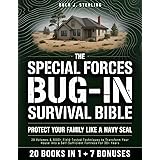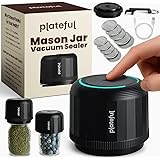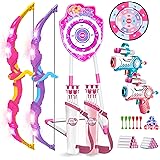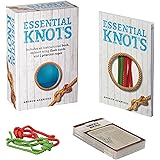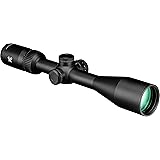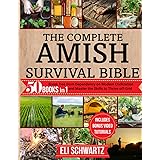Mastering Preparedness: Your Guide to Essential Survival Weapons for Home Defense
In a world of increasing uncertainty, personal readiness has become paramount. The video above highlights critical insights from security experts, military veterans, and seasoned survivalists. They discuss the **essential survival weapons** every prepared household should possess. This article expands on these recommendations. It offers deeper context, practical advice, and emphasizes the strategic importance of each tool. It is about understanding these tools, not just owning them.
The Indomitable Pump-Action Shotgun: A Home Defense Staple
The distinctive sound of a pump-action shotgun being loaded is a powerful deterrent. Many home invasions have been halted by this alone. Security experts consistently place this firearm at the top for home defense. Its recommendation is based on solid reasoning. Shotguns deliver immense stopping power at close range. They require minimal precision under duress. The wide shot pattern helps compensate for unsteady hands. This is vital in high-adrenaline situations. Law enforcement statistics confirm shotguns end confrontations quickly.
Advantages and Disadvantages of the Shotgun
- Effective stopping power is delivered at close ranges.
- Forgiving accuracy requirements are beneficial under stress.
- Versatile ammunition options are available, from birdshot to slugs.
- A reliable mechanical action means fewer moving parts.
- A strong psychological deterrent effect is well-known.
- Legal status is common in most jurisdictions with proper licensing.
- Its simple manual of arms is easy to learn.
- Limited magazine capacity is typical (4-8 rounds).
- Significant recoil can challenge smaller users.
- A longer barrel makes maneuvering in tight spaces difficult.
- Slower follow-up shots are a drawback compared to semi-automatics.
- Over-penetration concerns exist in residential settings with certain loads.
- Bulky size makes storage and transport more challenging.
Expert insights suggest models like the Mossberg 500 or Remington 870. These are considered the gold standard. Prices typically range from $300 to $600. Loading with #4 buckshot is often advised. This offers an optimal balance. It provides stopping power and reduced over-penetration risk. An 18.5-inch barrel is ideal for home defense applications.
The Versatile AR-15 Rifle: A Modular Solution
The AR-15 platform maintains its presence on expert lists. This is true despite ongoing controversy. This modular rifle system offers unmatched capabilities. It is ideal for various survival scenarios. Customization is a key benefit of the AR-15. It adapts to different users and situations. Its intermediate cartridge offers excellent range and accuracy. It remains manageable for most shooters. Parts, accessories, and ammunition are widely available. This is due to the platform’s widespread adoption. Military and law enforcement agencies endorse its effectiveness. The rifle’s ergonomic design allows multiple family members to use it effectively. Minor adjustments are usually sufficient. Standardization simplifies both training and maintenance. This maximizes investment in ammunition and accessories.
Advantages and Disadvantages of the AR-15
- High accuracy is achieved at extended ranges (500+ yards).
- A modular design allows vast customization for users.
- Standard 30-round magazine capacity provides sustained fire.
- Low recoil makes it suitable for diverse family members.
- Extensive aftermarket support and parts are readily available.
- Multiple caliber options enhance its utility, like .223/5.56 and .300 Blackout.
- A higher price point is typical ($600-1500 for quality builds).
- More training is required for effective use than shotguns.
- It is subject to varying state and local restrictions.
- Maintenance requirements are more complex.
- Over-penetration concerns exist with standard ammunition.
- Political controversy may affect future availability.
Experts recommend a quality mid-length 16-inch barrel configuration. Significant investment in proper training is crucial. Consider .300 Blackout for a reduced noise signature. This is an option if suppressors are legal locally. Budget an additional $300 to $500. This covers essential optics and other accessories.
The Reliable Handgun: Portability and Backup
Every survival expert highlights the value of a reliable sidearm. Handguns offer portability and concealment. Long guns cannot match these attributes. They are essential for mobile situations. They also provide backup firepower when needed. You might be unable to carry a long gun. A handgun provides a crucial alternative. It allows for quick deployment. This is vital in close-quarters defense. One-handed operation is also a key capability. This frees the other hand for other tasks.
Advantages and Disadvantages of Handguns
- Extreme portability and concealment are primary benefits.
- Quick deployment from a holster is possible.
- One-handed operation can be performed when necessary.
- They are suitable for vehicle carry.
- Less intimidating for family members during training.
- A wide variety of ammunition options are available.
- Retention of one hand for other tasks is allowed.
- Significant training is required for accuracy under stress.
- Limited stopping power is noted compared to long guns.
- A shorter effective range is characteristic.
- A higher skill requirement is needed for proficiency.
- Easy disarmament can occur in close combat.
- Smaller magazine capacity is common in many jurisdictions.
Choosing between a reliable double-action revolver or a proven semi-automatic is important. Revolvers like the Smith & Wesson 686 or Ruger GP100 offer simplicity. Semi-automatics like the Glock 19 or Sig P320 provide higher capacity. Quality options typically cost $400-800.
The Essential Fixed-Blade Knife: A Silent Companion
A quality fixed-blade knife becomes a reliable tool. It is crucial when ammunition is exhausted. It functions even if firearms fail. Survival experts consider this the most fundamental weapon. It never runs out of ammunition. No mechanical function is required for operation. Knives serve dual purposes. They act as both tools and weapons. They are silent and need no ammunition. They function reliably in all weather conditions. More importantly, they are essential for many tasks. Food preparation, shelter building, and countless survival tasks are among them.
Advantages and Disadvantages of Fixed-Blade Knives
- Ammunition is never exhausted.
- Completely silent operation is a key benefit.
- Functionality is maintained in all weather conditions.
- Multiple utility purposes are served by one tool.
- It is lightweight and compact.
- No legal restrictions apply in most areas.
- Extreme reliability is ensured with no moving parts.
- Maintenance is simple with basic sharpening.
- Close-quarters engagement is required.
- Significant skill and training are demanded.
- A psychological barrier exists for many users.
- It can be taken and used against the user.
- Limited effectiveness is seen against multiple attackers.
- Physical strength and mobility are requirements.
A 6-8 inch fixed blade is recommended. Reputable manufacturers include Ka-Bar, Cold Steel, or Benchmade. Expect to invest $100-300. This secures a quality survival knife. It should last for decades.
The Modern Crossbow: Silent Precision
Modern crossbows are formidable weapons. They offer unique advantages. These are highly valuable in survival situations. Their quiet operation is a major benefit. Reusable ammunition also makes them valuable. Discretion is often paramount in survival. Crossbows provide rifle-like accuracy. This comes with silent operation. They are effective for hunting game. They also serve for self-defense. Ammunition can be retrieved and reused. Importantly, they function without gunpowder. This makes them reliable when traditional ammunition is scarce.
Advantages and Disadvantages of Crossbows
- Virtually silent operation maintains stealth.
- Reusable ammunition (bolts/arrows) is eco-friendly.
- No gunpowder is required for firing.
- Effectiveness for hunting game is notable.
- Accuracy is good at moderate ranges (50-100 yards).
- Less regulation exists than for firearms in many areas.
- An intimidating appearance can deter threats.
- Cocking devices reduce strength requirements.
- Slow reload time is typical (15-30 seconds).
- Limited to single shots at a time.
- Strength is required to cock, even with aids.
- Bulkiness is a concern compared to firearms.
- Weather can negatively affect string performance.
- Bolt storage and transport present challenges.
- Higher quality units are expensive ($500-1500).
Modern compound crossbows offer superior performance. Brands like TenPoint, Ravin, or Barnett are leading choices. Investment in a cocking device is wise. Regular practice is needed to maintain proficiency.
The Tactical Tomahawk: Ancient Tool, Modern Utility
The tactical tomahawk updates an ancient tool. It combines an axe’s utility. It also provides the defensive capabilities of an impact weapon. Tomahawks excel in multiple roles. These include breaching doors and cutting wood. They serve for self-defense and various utility tasks. They are legal everywhere. No ammunition is required for them. Their intimidating appearance often prevents confrontations. This historical tool has proven its timeless value. Its simple, robust design is highly effective.
Advantages and Disadvantages of Tactical Tomahawks
- A multi-purpose tool combines axe and hammer functions.
- Excellent for breaching and demolition work.
- An intimidating psychological effect is generated.
- No ammunition is required for operation.
- Legal status exists in all jurisdictions.
- Durable construction ensures indefinite longevity.
- It can be thrown as a projectile weapon.
- Useful for camping and general survival tasks.
- Close-quarters engagement is a necessity.
- Significant training is demanded for combat effectiveness.
- Cumbersome use can occur in confined spaces.
- Risk of injury to the user exists if not properly trained.
- Limited effectiveness is seen against multiple attackers.
- Weight can cause fatigue during extended use.
American Tomahawk Company and Cold Steel produce excellent versions. Expect to spend $150-400. This secures professional-grade tools for your kit. Proper handling techniques are essential for safety.
The Compound Bow: Silent Hunting and Defense
Traditional archery equipment finds new relevance. It is key in modern survival planning. Compound bows offer superior accuracy and power. They maintain silent operation. This makes them valuable for both hunting and defense. They provide excellent accuracy at extended ranges. They operate without noise. They are effective for hunting game. This supplements food supplies. Defensive capabilities are offered without relying on finite ammunition. This makes them an important part of **essential survival weapons** strategies.
Advantages and Disadvantages of Compound Bows
- Silent operation helps maintain stealth.
- Arrows are reusable and can be crafted.
- An effective hunting tool for game procurement.
- Accuracy is good at ranges up to 60+ yards.
- A let-off feature reduces holding weight.
- Modern sights improve accuracy significantly.
- No regulatory restrictions exist in most areas.
- Mechanical advantage increases power output.
- Extensive practice is required for proficiency.
- Slow rate of fire compared to firearms.
- Weather affects string and arrow accuracy.
- Bulky transport and storage are challenges.
- Expensive for quality equipment ($400-1200).
- Arrow storage and transport pose challenges.
- Physical strength requirements are necessary.
Brands like Mathews, Hoyt, and Bear offer reliable compound bows. Investment in proper sights and stabilizers is wise. Regular practice at various distances is crucial for proficiency.
The Tactical Flashlight: Illumination and Impact
Often overlooked, tactical flashlights are weapons. They serve as both illumination tools and impact devices. Their legal status is universal. Their utility makes them essential for any kit. Tactical flashlights provide crucial light. They also serve as impact weapons when necessary. They are legal everywhere and affordable. Their bright strobing functions disorient attackers. This allows for threat assessment or escape. This simple tool adds significant capability.
Advantages and Disadvantages of Tactical Flashlights
- Legal to carry anywhere without restrictions.
- An essential utility purpose is served as a light source.
- Attackers can be temporarily blinded by a high-output beam.
- A strobe function disorients threats effectively.
- Sturdy construction makes it an effective impact weapon.
- Relatively inexpensive ($50-200) to acquire.
- Battery-powered operation provides long runtime.
- Multiple brightness settings conserve power.
- Limited effectiveness exists as a primary weapon.
- Close contact is required for impact use.
- Battery dependence creates maintenance needs.
- It can be easily dropped during confrontation.
- Limited range is a factor as a defensive tool.
- Bright light can compromise your night vision.
LED models from Surefire, Streamlight, or Fenix are recommended. A minimum 1000 lumen output is advisable. Carry spare batteries always. Consider rechargeable options with solar charging capability for extended use.
Pepper Spray/OC Spray: Non-Lethal Deterrence
Chemical deterrents offer non-lethal options. They are highly effective in specific circumstances. Survival experts recommend these for certain situations. Lethal force is not always justified. Deterrence, however, remains necessary. Pepper spray provides immediate threat incapacitation. It offers less-lethal options. It is legal in most areas. Minimal training is required for its use. It can be effective against both human and animal threats. This offers a valuable layer of defense.
Advantages and Disadvantages of Pepper Spray
- A non-lethal option reduces legal complications.
- Effectiveness against multiple attackers is notable.
- Works on both humans and dangerous animals.
- Minimal training is required for effective use.
- Affordable and widely available for purchase.
- Quick deployment is possible under stress.
- Range advantage exists over contact weapons.
- Stream patterns reduce wind blowback issues.
- Wind conditions can affect deployment greatly.
- Limited effectiveness against determined attackers.
- Temporary effect requires follow-up action.
- It can affect the user in confined spaces.
- Expiration dates necessitate replacement.
- May not work on individuals under drug influence.
- Legal restrictions apply in some jurisdictions.
Gel formulations are preferred over sprays. They help reduce wind issues. Brands like Sabre and Pam offer reliable options. Practice deployment for preparedness. Always have backup plans ready.
The Mighty Machete: Utility and Defense
The humble machete combines utility and defense. It offers both in one versatile tool. Its simplicity, durability, and effectiveness are well-known. It has become a survivor’s choice. This is true across cultures and climates worldwide. Machetes excel at clearing vegetation. They are great for processing wood. They help with food preparation. They also have defensive applications. They are legal everywhere. No ammunition is required. Their intimidating size often prevents confrontations. It is a true multi-purpose tool.
Advantages and Disadvantages of Machetes
- Extreme versatility is provided for multiple survival tasks.
- No ammunition or power source is required.
- Legal status exists in all jurisdictions.
- An intimidating appearance deters threats.
- Effective for clearing paths and vegetation.
- Useful for food preparation and processing.
- Durable construction ensures decades of use.
- Affordable with quality options under $100.
- Close-quarters engagement is required for defense.
- It can be unwieldy in confined spaces.
- Risk of self-injury exists if not properly handled.
- Limited effectiveness is seen against armored threats.
- Physical strength is required for effective use.
- It can be taken and used against the user.
- Maintenance is required to prevent rust.
Cold Steel, Condor, and Tramontina produce excellent machetes. Choose 18 to 22-inch blades. This provides optimal balance. It offers both reach and maneuverability. Learn proper handling to maximize its utility.
Beyond the Tools: Mindset, Training, and Legalities
Owning **essential survival weapons** is merely the first step. True preparedness extends beyond physical tools. The most important weapon is between your ears. Knowledge, rigorous training, and a resilient mindset are paramount. These factors outweigh any purchased tool. Each weapon discussed fills specific roles. None can replace proper planning. Consistent training is absolutely crucial. The right mindset makes all the difference. This is especially true when facing genuine threats. Understanding the reality of potential emergencies is vital. When services fail, you become your own protector.
Consider your specific situation carefully. Urban dwellers face unique challenges. Rural homeowners have different needs. Apartment living requires distinct solutions. House ownership also impacts choices. State laws vary dramatically. This makes some options unavailable. Factor in your family’s capabilities. Assess their training commitment. Consider their comfort levels with different weapons. The question is not if emergencies happen. It is whether you will be ready when circumstances demand action. Start with basic understanding. Invest heavily in proper training. Understand all legal obligations completely. Build your capabilities gradually. Avoid rushing into purchases. Weapons must be used effectively. These **essential survival weapons** are insurance policies. They are written in steel and determination.



